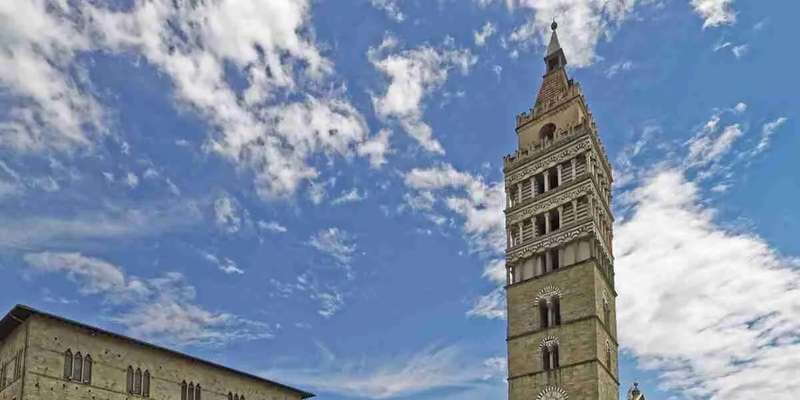- Home
- Useful Tips
- Pistoia's most picturesque streets
Many travelers breeze through Pistoia's main square without realizing the medieval magic waiting in its labyrinthine side streets. Recent visitor surveys show 68% of day-trippers miss the city's most photogenic corners, leaving with generic cathedral photos rather than authentic Tuscan memories. The challenge lies in knowing where to wander - while Google Maps directs you to major landmarks, Pistoia's true character reveals itself through uneven cobblestones, ivy-draped archways, and quiet piazzas where elderly locals play cards. Without local guidance, you might spend hours circling the same tourist-packed routes, unaware that just around the corner lies Via del Lastrone's flower-filled balconies or Corso Silvano Fedi's artisan workshops. These overlooked passages hold the essence of a city that's remained remarkably unchanged since the 14th century.


Why Pistoia's backstreets outshine its main attractions
While Piazza del Duomo impresses with its striped cathedral, Pistoia's soul lives in the narrow vicoli where sunlight filters through laundry lines. The secret lies in urban evolution - as medieval families built tower houses ever higher, they created shadowy passageways that now form atmospheric tunnels between buildings. Via degli Orafi exemplifies this, its overhanging structures nearly touching as you pass goldsmiths' windows. Unlike Florence's widened tourist thoroughfares, these constricted lanes preserve authentic textures: hand-chiseled stone doorframes on Via di Stracceria, or the sudden reveal of Oratorio di San Desiderio's frescoes when you least expect it. Locals know these routes by heart - the butcher taking Via del Lastrone to avoid crowds, the nun cutting through Arco dei Catani to reach Sant'Andrea. Their daily rhythms create living postcards no tour bus can deliver.
Mapping Pistoia's five most enchanting routes
Begin your discovery at Via della Madonna, where 15th-century palazzos lean like tipsy gentlemen, their coats-of-arms still visible above doorways. Turn onto Via di Stracceria to find the 'street of rags', once home to fabric dyers and now lined with artisan boutiques. For perfect golden hour photos, time your walk along Corso Silvano Fedi when sunlight gilds its antique bookbinders' signs. Don't miss Vicolo del Malconsiglio - just 90cm wide at points, this 'street of bad advice' got its name from political plotters who whispered here. Complete your route at Via del Duca, where hidden courtyards suddenly open like secret gardens. These paths form a natural loop covering under 2km, letting you linger without getting lost. Morning walkers might catch bakers sliding focaccia into wood ovens, while evening strollers discover street lamps casting Rembrandt-like shadows on the pietra serena stone.
When to experience these streets at their magical best
Pistoia's alleyways transform with the hours like stages changing sets. Dawn belongs to shopkeepers rolling up metal shutters, their clatter echoing off the walls - arrive by 7am to have Via del Lastrone's flower stalls to yourself. Mid-morning brings the best light for photography as sun angles create natural spotlights on Via degli Orafi's gold-leaf displays. Surprisingly, rainy days enhance the experience - wet cobblestones reflect the warm glow of workshop windows, while you'll share the covered loggia of Via del Duca with umbrella-toting locals. Wednesday and Saturday mornings add market-day energy, when farmers carrying crates of artichokes create living still-lifes in the passages. For the ultimate atmosphere, visit during the Giostra dell'Orso festival in July, when torchlit processions flood the alleys with medieval pageantry. Just avoid cruise excursion hours (10am-noon) when larger groups clutter the narrower lanes.
Turning your stroll into a cultural treasure hunt
Pistoia rewards observant walkers with layers of history hidden in plain sight. Run your fingers along Via del Lastrone's walls to feel bullet scars from WWII resistance fights. At Vicolo della Sirena, spot the mermaid carving that gave the alley its name - locals say she grants wishes if you touch her tail. Peek through iron grates on Via di Stracceria to see original Roman road foundations below your feet. Keep an ear out for the clink-clink from Via degli Orafi, where goldbeaters still practice their centuries-old craft. These streets form an open-air museum where every detail tells a story - the worn steps where generations rested their baskets, the shrine niches that once held plague remedies. Bring a notebook to sketch architectural details or record snippets of overheard Italian. Unlike structured tours, this organic exploration lets you create personal connections with the city's living history.
